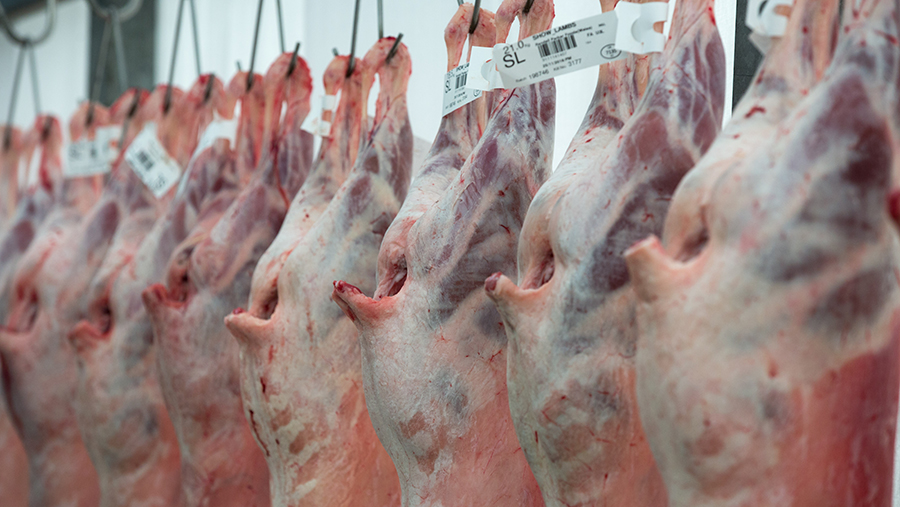Lamb prices under pressure from global imports
 © Tim Scrivener
© Tim Scrivener UK deadweight lamb prices have fallen by 120p/kg during the past four weeks to average 525.6p/kg for the week ending 6 August.
Rising import volumes are putting further pressure on farmgate prices.
There was a 22% increase in the amount of sheepmeat imported into the UK during the first five months of 2022, according to HMRC data.
See also: Tentative recovery for liveweight lamb prices after big fall
However, imports remain below pre-pandemic levels.
UK farmgate prices are reportedly under pressure from limited demand at retail as well as reduced export demand following the Eid-al-Adha festival in July.
Quality Meat Scotland’s (QMS) market intelligence manager, Iain Macdonald, says an important place to look for potential reasons behind this rebound is New Zealand, where lamb production volumes surged by 18% year-on-year in the second quarter, following a 19% reduction in the first quarter.
Mr Macdonald said: “One factor underpinning market prices in recent years has been a reduction in the volume of imports since the middle of the last decade.”
As well as the rise in trade with the UK, the EU imported 18% more lamb from New Zealand than a year earlier through the first five months of 2022, according to QMS.
New Zealand’s largest export market is traditionally China, with more than 150,000t of sheepmeat exported from NZ to China for the year ending September 2021, according to Beef & Lamb New Zealand. However, due to reduced demand from China, New Zealand is increasing exports elsewhere.
Less fresh lamb and more frozen product is being exported by New Zealand due to issues with global shipping logistics.
“UK import data points to a 50:50 split in the first five months of 2021, shifting to an 80:20 split in favour of frozen sheepmeat in the same period this year,” said Mr Macdonald.
QMS figures suggest that GB deadweight prices were at a 20% premium to New Zealand lamb prices in July.
New Zealand trade deal
The UK signed a free-trade agreement with New Zealand back in February, which allows for more tariff-free access for lamb.
Modelling recently carried out by the AHDB forecasts that a trade deal with New Zealand means imports to the UK could increase by about 14%, or 5,800t/year.
However, in the event of New Zealand losing China as an export market, then volumes of imports to the UK would be expected to rise considerably more than this.
Australia
There is more limited competition in both UK and EU markets from Australian lamb, due to a smaller tariff-free quota, according to QMS. However, import volumes from Australia have risen during the first five months of trade.
Mr Macdonald said: “In part, this rise is likely to reflect challenges for Australia’s exporters in China and the Middle East, but it has also been supported by a recovery in production as Australia’s sheep farmers rebuild flocks following the drought of 2018 and 2019.”
QMS suggests that while Australia’s sheepmeat production is expected to expand in the coming years, and a trade deal with the UK will improve its market access, there will be other outlets for Australia’s exporters to target.
